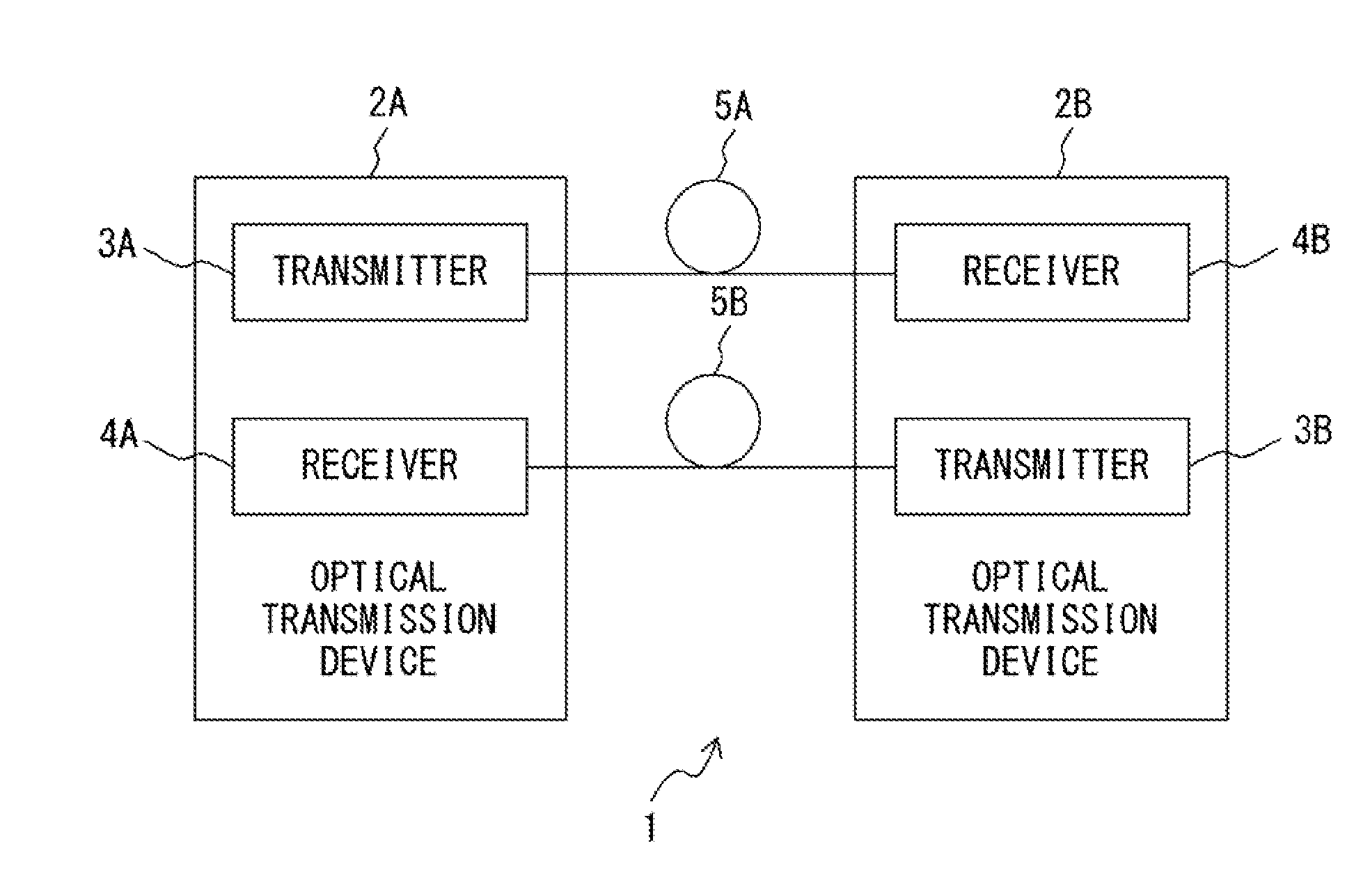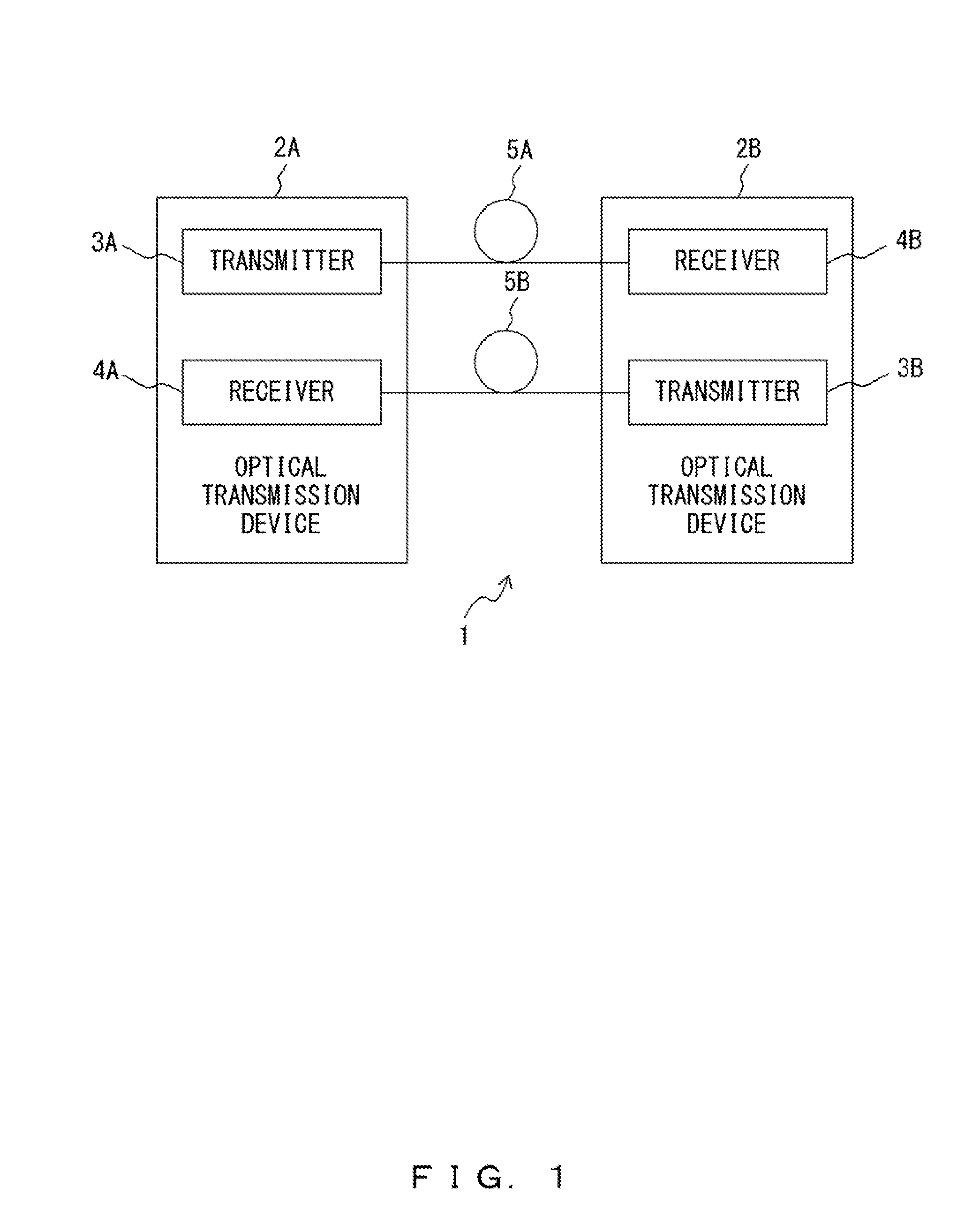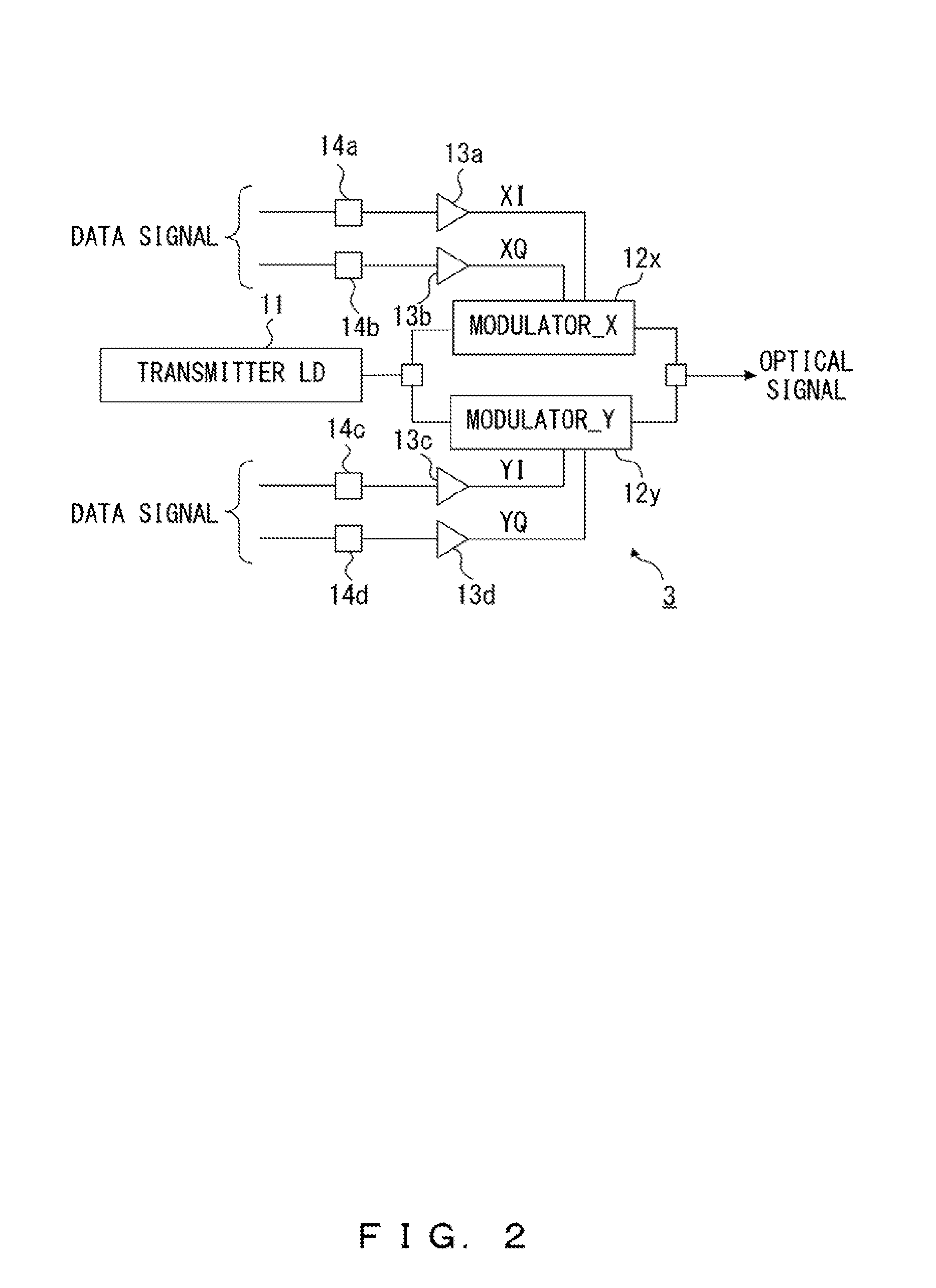Skew suppression method and optical transmission system
a technology of optical transmission system and suppression method, which is applied in the direction of optical transmission, electromagnetic transmission, transmission monitoring, etc., can solve the problems of deterioration of optical transmission system characteristics, adversely affecting the quality of signals recovered by digital signal processors, etc., and achieve the effect of suppressing a skew
- Summary
- Abstract
- Description
- Claims
- Application Information
AI Technical Summary
Benefits of technology
Problems solved by technology
Method used
Image
Examples
first embodiment
[0061]FIG. 4 illustrates a relationship among skew, chromatic dispersion, and Q factor. In FIG. 4, the horizontal axis indicates a skew compensation amount provided in the receiver 4. The vertical axis indicates the Q factor. The Q factor indicates the quality of received signals. For example, Q factor is calculated based on the number of corrected errors counted by a FEC (forward error correction) circuit.
[0062]The graph illustrated in FIG. 4 is obtained by simulations under the following conditions. The difference between the frequency of the transmitter LD 11 and the frequency of the local LD 22 (i.e., frequency offset) is zero. The skew between I / Q generated in the transmitter 3 is +9 ps. The skew between I / Q generated in the receiver 4 is −9 ps. The line width of the transmitter LD 11 and the local LD 22 is 100 kHz. The optical signal-to-noise ratio (OSNR) is 15 dB. The skew between I / Q generated in the transmitter 3 is hereinafter referred to as “Tx skew”, and the skew between...
second embodiment
[0106]FIG. 9 illustrates a configuration of an optical transmission system for providing a skew suppression method according to a second embodiment. The optical transmission system according to the second embodiment includes the transmitter 3 illustrated in FIG. 2, the receiver 4 illustrated in FIG. 3, the controller 42, and a chromatic dispersion adder 43. Compared to the first embodiment, the optical transmission system according to the second embodiment is provided with the chromatic dispersion adder 43 instead of the chromatic dispersion adder 41.
[0107]The chromatic dispersion adder 41 optically adds chromatic dispersion to an optical signal. On the other hand, the chromatic dispersion adder 43 electrically adds chromatic dispersion to a data signal for generating an optical signal.
[0108]The chromatic dispersion adder 43 is realized by, for example, a digital filter. When a bit rate of the data signal and a modulation scheme are known in advance, distortion of an optical signal ...
third embodiment
[0110]In the first and second embodiments, the Tx skew and the Rx skew are independently suppressed by sufficiently increasing the chromatic dispersion added to the optical signal. On the other hand, in a third embodiment, the Tx skew and the Rx skew are independently suppressed by sufficiently increasing a differential group delay (DGD) added to the optical signal. DGD is generated by polarization mode dispersion.
[0111]FIG. 10 illustrates simulation results of skew, polarization mode dispersion, and Q factor. The simulations are conducted under substantially the same conditions as in FIG. 4. In the simulations illustrated in FIG. 10, the Tx skew is +9 ps and the Rx skew is also +9 ps. In addition, in the simulations illustrated in FIG. 10, a relationship between a skew compensation amount and Q factor while the DGD of the polarization mode dispersion is changed is calculated.
[0112]In the case where the DGD of the optical transmission line between the transmitter 3 and the receiver ...
PUM
 Login to View More
Login to View More Abstract
Description
Claims
Application Information
 Login to View More
Login to View More - R&D
- Intellectual Property
- Life Sciences
- Materials
- Tech Scout
- Unparalleled Data Quality
- Higher Quality Content
- 60% Fewer Hallucinations
Browse by: Latest US Patents, China's latest patents, Technical Efficacy Thesaurus, Application Domain, Technology Topic, Popular Technical Reports.
© 2025 PatSnap. All rights reserved.Legal|Privacy policy|Modern Slavery Act Transparency Statement|Sitemap|About US| Contact US: help@patsnap.com



